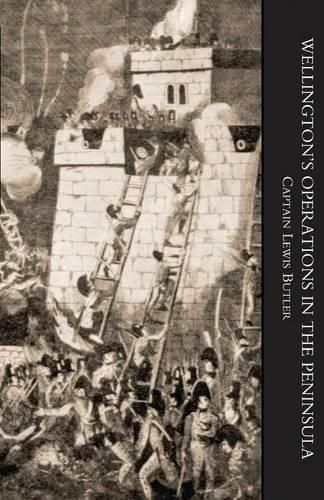Readings Newsletter
Become a Readings Member to make your shopping experience even easier.
Sign in or sign up for free!
You’re not far away from qualifying for FREE standard shipping within Australia
You’ve qualified for FREE standard shipping within Australia
The cart is loading…






This title is printed to order. This book may have been self-published. If so, we cannot guarantee the quality of the content. In the main most books will have gone through the editing process however some may not. We therefore suggest that you be aware of this before ordering this book. If in doubt check either the author or publisher’s details as we are unable to accept any returns unless they are faulty. Please contact us if you have any questions.
Written almost a century after the events they describe, Lewis Butler’s two volumes on Wellington’s Peninsula War campaigns have rightly been judged a classic of military history. The story of how the Iron Duke turned disaster into triumph, and defeat into a final victory, has surely never been told with more authority. Butler’s first volume begins with the Spanish popular revolt against the imposition of Napoleon’s brother Joseph as their king and their appeal to Britain for aid. Early British disasters culminate in Sir John Moore’s retreat and death at Corunna. Wellington fought back at the battles of Talavera and Busaco, but was compelled by Marshal Massena to retreat once more into Portugal, and only his foresight in constructing the impregnable lines of Torres Vedras, and denuding the country before them, saved the day. The first volume concludes with Wellington taking the offensive again at the battle of Fuentes d’ Onoro and Albuera. Volume Two begins with Wellingotn besieging and storming Badajoz and Ciudad Roderigo. These successes are followed by the difficult but decisive campaign culminating in Wellington’s victory over Marshal Marmont at Salamanca and his entry into Madrid. After a difficult winter, Wellington once again resumes the offensive, defeats Marshal Soult at Vitoria and chases him over the Pyrenees and out of Spain. But Soult’s stubborn rfesistance continues at the battles of Nivelle, the Nive, and Orthez as the fighting moves towards Toulouse where Wellington fights his final, victoriuous battle of the war as news of Napoleon’s abdication arrives. Both volumes are liberally illustrated with maps and sketches of the battles and other operations. What Napoleon called his ‘Spanish ulcer’ has never been more minutely described and dissected, with the author paying a military man’s due attention to the sinews of war as well as to the action.
$9.00 standard shipping within Australia
FREE standard shipping within Australia for orders over $100.00
Express & International shipping calculated at checkout
This title is printed to order. This book may have been self-published. If so, we cannot guarantee the quality of the content. In the main most books will have gone through the editing process however some may not. We therefore suggest that you be aware of this before ordering this book. If in doubt check either the author or publisher’s details as we are unable to accept any returns unless they are faulty. Please contact us if you have any questions.
Written almost a century after the events they describe, Lewis Butler’s two volumes on Wellington’s Peninsula War campaigns have rightly been judged a classic of military history. The story of how the Iron Duke turned disaster into triumph, and defeat into a final victory, has surely never been told with more authority. Butler’s first volume begins with the Spanish popular revolt against the imposition of Napoleon’s brother Joseph as their king and their appeal to Britain for aid. Early British disasters culminate in Sir John Moore’s retreat and death at Corunna. Wellington fought back at the battles of Talavera and Busaco, but was compelled by Marshal Massena to retreat once more into Portugal, and only his foresight in constructing the impregnable lines of Torres Vedras, and denuding the country before them, saved the day. The first volume concludes with Wellington taking the offensive again at the battle of Fuentes d’ Onoro and Albuera. Volume Two begins with Wellingotn besieging and storming Badajoz and Ciudad Roderigo. These successes are followed by the difficult but decisive campaign culminating in Wellington’s victory over Marshal Marmont at Salamanca and his entry into Madrid. After a difficult winter, Wellington once again resumes the offensive, defeats Marshal Soult at Vitoria and chases him over the Pyrenees and out of Spain. But Soult’s stubborn rfesistance continues at the battles of Nivelle, the Nive, and Orthez as the fighting moves towards Toulouse where Wellington fights his final, victoriuous battle of the war as news of Napoleon’s abdication arrives. Both volumes are liberally illustrated with maps and sketches of the battles and other operations. What Napoleon called his ‘Spanish ulcer’ has never been more minutely described and dissected, with the author paying a military man’s due attention to the sinews of war as well as to the action.